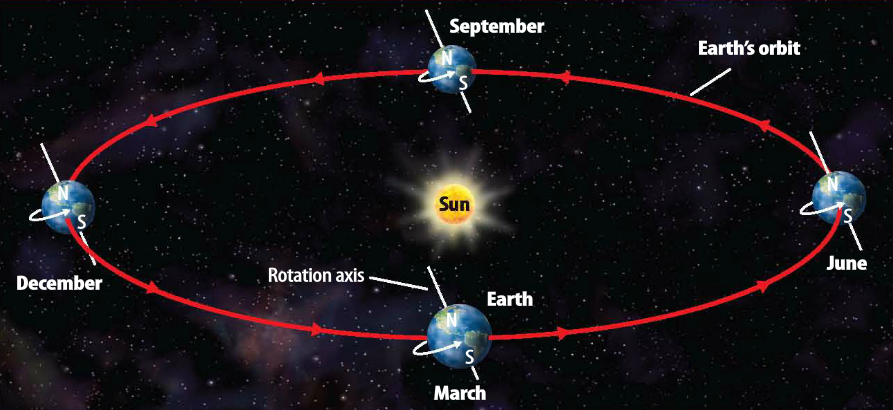Earth & the Sun
- Swift E. Creek
- Apr 23, 2017
- 2 min read
EARTH'S ORBIT
ORBIT - the path an object follows as it moves around another object.
REVOLUTION - The motion of an object along this orbital path is called
The Earth orbits the Sun. One full revolution around the Sun is called a year. Earth revolves around the Sun on an elliptical path, with the Sun at one focal point of the ellipse. You can picture an ellipse as an elongated circle with two focal points in the middle instead of one at the center.
Seasons

COMMON MISCONCEPTION - Many people mistakenly think that the elliptical shape of Earth’s orbit is what causes the seasons.
REALITY - The seasons are caused by direct and indirect sunlight on Earth's surface as a result of Earth's tilted orbit.
Earth rotates on an axis that goes through the North and South Pole which is tilted 23.5° from Earth’s orbital plane. This means that each hemisphere is tilted toward the Sun for part of the year and away from the Sun for part of the year; and this is what causes Earth’s seasons. When one hemisphere is tilted toward the Sun, it receives direct sunlight resulting in warmer temperatures. At the same time, the other hemisphere is tilted away from the Sun and receives indirect sunlight. This means that the energy from the Sun is spread out over a larger area, reducing its intensity and resulting in cooler temperatures. When the Northern Hemisphere is tilted toward the Sun, we experience summer. When it is tilted away from the Sun, we experience winter.
FSSA TIP - You may encounter diagrams similar to the one shown below that attempt to explain the seasons. However, as you know, models like this one can sometimes be misleading. The point of view is tilted to look at Earth’s orbit from an angle. This causes the nearly-circular ellipse of Earth’s actual orbit to look like an extremely long ellipse. This can give the reader a false impression of the shape of Earth’s orbit, which may play into misconceptions about the seasons as well.

Seasons
Earth's Rotation and Revolution




Comments